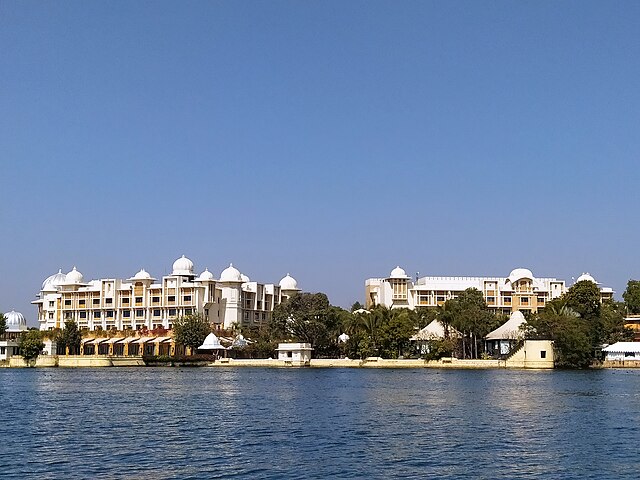Have you ever dreamed of stepping into a fairy tale? Udaipur, often called the “City of Lakes” or the “Venice of the East,” offers exactly that magical experience. This enchanting city in Rajasthan isn’t just another tourist destination – it’s a living, breathing piece of history that captivates every visitor who walks through its ancient streets.
What makes Udaipur so special? Picture this: majestic palaces rising from crystal-clear lakes, ornate temples echoing with centuries-old prayers, and bustling markets filled with vibrant textiles and aromatic spices. It’s like someone took the most beautiful parts of India and carefully arranged them in one spectacular location.
The city’s unique geography, nestled in the Aravalli Hills and surrounded by artificial lakes, creates a microclimate that’s surprisingly pleasant even during Rajasthan’s harsh summers. This isn’t just about sightseeing – it’s about immersing yourself in a culture that has preserved its royal heritage while embracing modernity.
Whether you’re a history buff fascinated by Rajput architecture, a photography enthusiast seeking that perfect shot, or simply someone looking to escape the ordinary, Udaipur delivers experiences that stay with you long after you’ve returned home. The city has successfully maintained its authentic character while providing world-class hospitality, making it accessible to travelers from all walks of life.
Top Historical Palaces and Monuments
City Palace Complex: The Crown Jewel
Standing tall on the eastern shore of Lake Pichola, the City Palace complex isn’t just a single building – it’s an entire universe of royal splendor. This architectural marvel, built over nearly 400 years by successive Maharanas of Mewar, represents one of the largest palace complexes in Rajasthan.
Walking through the City Palace feels like traveling through time. Each courtyard, each corridor tells a different story of Rajput valor and artistic excellence. The palace museum houses an incredible collection of royal artifacts, including weapons, paintings, and furniture that showcase the opulent lifestyle of Udaipur’s rulers.
Don’t miss the Mor Chowk (Peacock Courtyard) with its stunning mosaic work, or the Manak Mahal (Ruby Palace) with its beautiful glass and mirror work. The palace also offers some of the most breathtaking views of Lake Pichola and the surrounding cityscape. Pro tip: visit during the late afternoon when the golden light creates perfect photography conditions.
Lake Palace: Floating Marvel on Lake Pichola
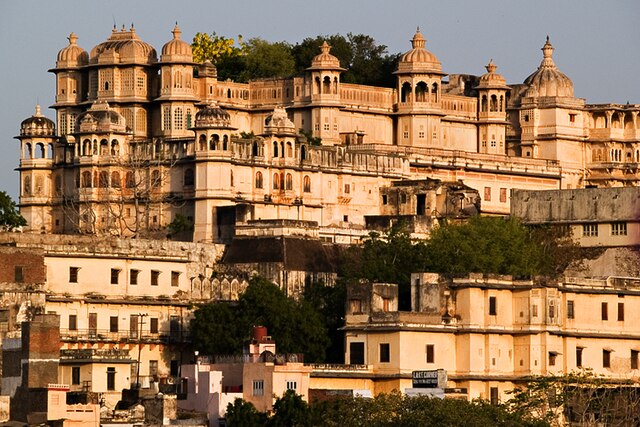
If there’s one image that defines Udaipur, it’s the ethereal Lake Palace seemingly floating on the pristine waters of Lake Pichola. Now operated as a luxury hotel, this 18th-century palace was originally built as a summer retreat for the royal family.
The palace’s white marble architecture appears to change color throughout the day, from golden at sunrise to silver under moonlight. Even if you’re not staying at the hotel, you can admire this architectural wonder from various vantage points around the lake or take a boat ride to get closer views.
The palace’s construction is an engineering marvel – built on a natural foundation of rock, it required innovative techniques to create a stable structure in the middle of a lake. The attention to detail in every carved pillar, every decorative element, reflects the artistic sensibilities of the Mewar dynasty.
Jag Mandir: The Garden Palace
Often overshadowed by its more famous neighbor, Jag Mandir deserves equal attention for its unique history and stunning architecture. This island palace served as a refuge for Prince Khurram (later Emperor Shah Jahan) when he rebelled against his father, and some say it inspired the design of the Taj Mahal.
The palace’s Gul Mahal (Rose Palace) features intricate stone carvings and provides a peaceful retreat from the city’s hustle. The gardens surrounding the palace are meticulously maintained, offering a perfect blend of Mughal and Rajput landscaping styles.
What makes Jag Mandir special is its intimate atmosphere. Unlike the grand scale of City Palace, this venue offers a more personal connection with royal history. The boat ride to reach the palace is an experience in itself, providing panoramic views of Udaipur’s skyline.
Monsoon Palace: Sunset Views Beyond Compare
Perched atop Bansdara Peak, the Monsoon Palace (Sajjangarh Palace) offers arguably the best sunset views in all of Udaipur. Built in the 1880s to monitor monsoon clouds, this palace now serves as a popular viewpoint for visitors seeking that perfect Instagram shot.
The journey to the palace involves a scenic drive through the Sajjangarh Wildlife Sanctuary, where you might spot various species of birds and small mammals. The palace itself, though smaller than others in Udaipur, provides a 360-degree view of the surrounding landscape.
During monsoon season, the palace lives up to its name as clouds often envelope the structure, creating a mystical atmosphere. The sunrise views are equally spectacular, though you’ll need to start early to catch the first light painting the city in golden hues.
Sacred Temples and Spiritual Sites
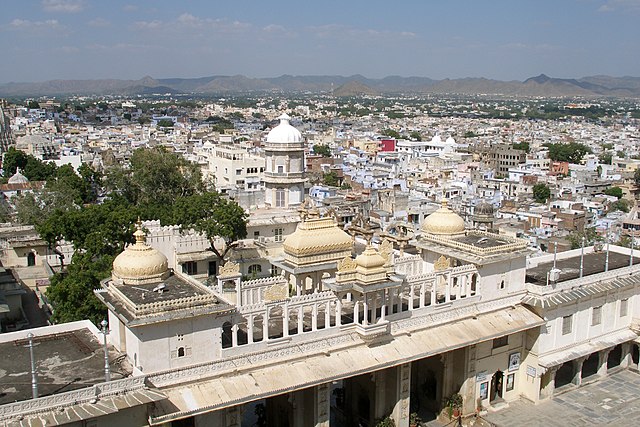
Jagdish Temple: Architectural Masterpiece
Located in the heart of Udaipur’s old city, Jagdish Temple stands as a testament to the region’s rich spiritual heritage. Built in 1651, this Indo-Aryan style temple dedicated to Lord Vishnu features intricate carvings that rival any monument in India.
The temple’s three-story structure is adorned with carved pillars, decorated ceilings, and painted walls that tell stories from Hindu mythology. The main shrine houses a black stone image of Lord Jagannath, while smaller shrines are dedicated to various other deities.
What makes visiting Jagdish Temple special isn’t just its architecture – it’s the living spiritual tradition that continues today. The temple remains active with daily prayers and festivals, allowing visitors to experience authentic Hindu worship practices. The evening aarti (prayer ceremony) is particularly moving, with the sound of bells and chanting creating an atmosphere of deep devotion.
Eklingji Temple: Ancient Spiritual Center
About 22 kilometers from Udaipur, Eklingji Temple represents one of the most important spiritual sites in the region. This temple complex, dedicated to Lord Shiva, has been the family deity of the Mewar rulers for over a thousand years.
The temple’s unique four-faced black marble image of Lord Shiva is a masterpiece of medieval Indian sculpture. The complex includes 108 temples within its walls, each representing different aspects of Hindu spirituality. The main temple’s architecture features a distinctive pyramid-style roof and intricate stone carvings.
Visiting Eklingji offers insights into the deep spiritual traditions that have shaped Rajasthani culture. The temple’s connection to the royal family of Mewar adds historical significance to the spiritual experience. The Monday evening prayers are particularly atmospheric, with hundreds of devotees gathering for worship.
Neemach Mata Temple: Hilltop Sanctuary
For those seeking a combination of spiritual experience and adventure, Neemach Mata Temple offers both. Located atop a hill accessible via a cable car ride, this temple dedicated to Goddess Durga provides panoramic views of Udaipur and the surrounding Aravalli Hills.
The temple’s location makes it a popular destination for both pilgrims and tourists. The cable car journey itself is thrilling, offering bird’s-eye views of the city as you ascend. The temple complex includes several smaller shrines and a peaceful atmosphere perfect for meditation and reflection.
The temple is particularly crowded during Navratri, when thousands of devotees climb the hill to seek the goddess’s blessings. However, visiting during quieter times allows for a more contemplative experience while still enjoying the spectacular views.
Beautiful Lakes and Water Bodies
Lake Pichola: The Heart of Udaipur
Lake Pichola isn’t just a body of water – it’s the soul of Udaipur. This artificial lake, created in 1362, serves as the city’s most iconic feature and provides the perfect setting for its famous palaces. The lake’s calm waters reflect the surrounding palaces, creating picture-perfect scenes that have made Udaipur famous worldwide.
A boat ride on Lake Pichola is absolutely essential for any Udaipur visit. The one-hour journey takes you past the Lake Palace, Jag Mandir, and offers unique perspectives of the City Palace complex. The boat operators are usually knowledgeable locals who can share interesting stories about the lake’s history and the surrounding monuments.
The lake is at its most beautiful during sunrise and sunset when the changing light creates magical reflections on the water. The surrounding ghats (steps leading to the water) are perfect for quiet contemplation or photography. Don’t miss the Ambrai Ghat, which offers some of the best views of the Lake Palace.
Fateh Sagar Lake: Perfect for Boating
Connected to Lake Pichola by a canal, Fateh Sagar Lake offers a different but equally enchanting experience. This lake, surrounded by hills and dotted with small islands, provides excellent boating opportunities and a more relaxed atmosphere compared to the busier Lake Pichola.
The lake features three small islands, each with its own character. Nehru Park, located on one of the islands, is accessible by boat and offers a peaceful retreat with gardens and a small restaurant. The other islands house a public park and the Udaipur Solar Observatory, making boat trips both scenic and educational.
Fateh Sagar Lake is particularly popular with local families and offers a glimpse into how Udaipur residents enjoy their city’s natural beauty. The lakeside promenade is perfect for evening walks, and several cafes and restaurants offer lakeside dining with beautiful views.
Udai Sagar Lake: Hidden Gem
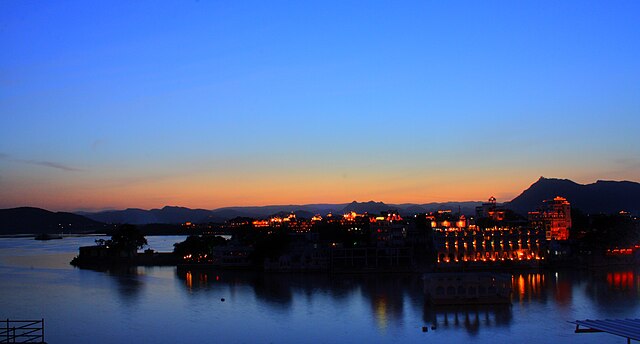
Often overlooked by tourists, Udai Sagar Lake represents Udaipur’s hidden natural beauty. Located about 13 kilometers from the city center, this lake offers a more pristine and less crowded experience compared to the main tourist lakes.
The lake is surrounded by hills and forests, creating excellent opportunities for nature photography and bird watching. During the monsoon season, the lake fills to capacity, creating spectacular waterfalls and lush green surroundings. The area around the lake is also home to several small temples and villages that offer insights into rural Rajasthani life.
Udai Sagar Lake is perfect for those seeking to escape the crowds and experience Udaipur’s natural beauty in a more secluded setting. The lake area is also popular with cycling enthusiasts and offers several scenic routes for exploration.
Gardens and Natural Attractions
Saheliyon Ki Bari: Garden of Maidens
Saheliyon Ki Bari, literally meaning “Garden of Maidens,” was built in the 18th century for the royal ladies and their companions. This beautifully landscaped garden showcases the finest in Mughal and Rajasthani garden design, featuring fountains, kiosks, marble elephants, and a delightful lotus pool.
The garden’s main attraction is its elaborate fountain system, which operates without any pumps or motors, relying instead on ingenious engineering principles from centuries past. The four main pools are adorned with marble kiosks and surrounded by lush lawns and flower beds that change with the seasons.
What makes Saheliyon Ki Bari special is its intimate scale and peaceful atmosphere. Unlike the grand palaces, this garden offers a more personal connection with royal leisure activities. The garden also houses a small museum displaying royal artifacts and provides insights into the daily lives of the royal women.
Gulab Bagh and Zoo: Family Fun
For families traveling with children, Gulab Bagh and Zoo offers the perfect combination of natural beauty and entertainment. This sprawling garden, spread over 100 acres, is home to a variety of roses (hence the name “Gulab” meaning rose) and other flowering plants.
The zoo section houses various species of animals and birds, making it an educational experience for children. The garden also features a library, a museum, and several walking trails that are perfect for morning or evening strolls. The Victoria Hall within the garden complex hosts cultural events and exhibitions throughout the year.
Gulab Bagh represents Udaipur’s commitment to preserving green spaces within the urban environment. The garden’s mature trees provide welcome shade during hot summer days, and the various themed sections offer different experiences within a single location.
Museums and Cultural Experiences
Vintage Car Museum: Automobile Paradise
Car enthusiasts will find paradise at Udaipur’s Vintage Car Museum, which houses one of the world’s finest collections of vintage and classic automobiles. The museum showcases the personal collection of the Maharana of Udaipur, featuring rare vehicles from the early 20th century.
The collection includes Rolls-Royce cars, Cadillacs, and other luxury vehicles that were once used by the royal family. Each car is maintained in pristine condition and represents a piece of automotive history. The museum also displays vintage motorcycles and provides detailed information about each vehicle’s history and significance.
What makes this museum unique is the personal stories behind each vehicle. Many of the cars were custom-built for the royal family and feature unique modifications and designs. The museum offers guided tours that provide fascinating insights into the luxury and craftsmanship of a bygone era.
Bagore Ki Haveli: Traditional Rajasthani Culture
Bagore Ki Haveli, located on the waterfront of Lake Pichola, offers visitors an authentic taste of Rajasthani culture and lifestyle. This 18th-century haveli has been converted into a museum showcasing traditional costumes, modern art, and ancient artifacts.
The haveli’s architecture itself is worth admiring, with its intricate mirror work, wall paintings, and carved balconies. The museum displays royal costumes, turbans, and jewelry that provide insights into the fashion and lifestyle of Rajasthani royalty.
The evening cultural shows at Bagore Ki Haveli are particularly popular, featuring traditional Rajasthani dance and music performances. These shows provide an excellent introduction to local culture and are performed by skilled artists who keep ancient traditions alive.
Best Markets and Shopping Areas
Udaipur’s markets offer a treasure trove of traditional Rajasthani crafts, textiles, and souvenirs. The city is famous for its miniature paintings, handwoven textiles, silver jewelry, and leather goods. Each market area has its own character and specialties.
Hathi Pol Bazaar is the main shopping street, famous for its miniature paintings and traditional Rajasthani artwork. The narrow lanes are lined with shops selling everything from small souvenirs to expensive antiques. The area near Jagdish Temple is particularly good for traditional textiles and embroidered fabrics.
Shilpgram, located on the outskirts of the city, offers a more authentic shopping experience with direct access to rural artisans. This craft village showcases traditional Rajasthani, Gujarati, and Maharashtrian crafts and provides opportunities to watch artisans at work.
Sadar Bazaar and Chetak Circle are more modern shopping areas where you can find both traditional and contemporary items. These areas are less touristy and offer better prices for everyday items and local products.
Local Cuisine and Food Experiences
Udaipur’s culinary scene is a delightful blend of traditional Rajasthani flavors and modern dining experiences. The city offers everything from street food to fine dining, with many restaurants providing stunning lake views alongside delicious meals.
Traditional Rajasthani cuisine features dishes like dal baati churma, gatte ki sabzi, and ker sangri. These dishes reflect the region’s arid climate and use ingredients that can be preserved for long periods. The use of dried fruits, nuts, and spices creates unique flavors that are distinctly Rajasthani.
Several restaurants in Udaipur offer rooftop dining with panoramic views of the lakes and palaces. These venues provide the perfect setting for romantic dinners or special celebrations. Many also feature live music and cultural performances that enhance the dining experience.
For those interested in learning to cook Rajasthani cuisine, several cooking classes are available where you can learn to prepare traditional dishes using authentic ingredients and techniques. These classes often include visits to local markets to source ingredients.
Adventure Activities and Outdoor Fun
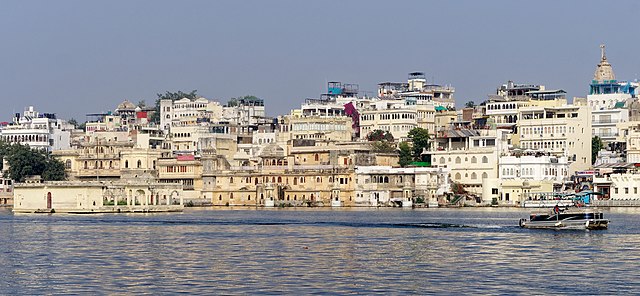
Udaipur isn’t just about palaces and lakes – it also offers numerous adventure activities for thrill-seekers. The surrounding Aravalli Hills provide excellent opportunities for trekking, rock climbing, and nature walks. Several trails offer different difficulty levels, from easy walks suitable for families to challenging treks for experienced hikers.
Zip-lining has become increasingly popular, with several operators offering thrilling rides over valleys and forests. These activities provide unique perspectives of Udaipur’s landscape and are perfect for adrenaline junkies seeking adventure.
The lakes around Udaipur offer various water sports including kayaking, jet skiing, and speed boating. Several operators provide equipment and instruction for beginners, making these activities accessible to visitors of all skill levels.
Cycling tours have gained popularity as a way to explore Udaipur’s countryside and rural areas. These tours typically include visits to local villages, organic farms, and lesser-known temples, providing insights into rural Rajasthani life.
Best Time to Visit Udaipur
Timing your visit to Udaipur can significantly impact your experience. The city experiences a hot desert climate with distinct seasons, each offering different advantages for visitors.
The winter months (October to March) are considered the best time to visit Udaipur. During this period, temperatures are pleasant, ranging from 10°C to 25°C, making it ideal for sightseeing and outdoor activities. This is also the peak tourist season, so expect larger crowds and higher prices.
The monsoon season (July to September) transforms Udaipur into a lush green paradise. The lakes fill to capacity, waterfalls come alive, and the entire landscape becomes incredibly photogenic. However, heavy rains can sometimes disrupt outdoor activities and sightseeing plans.
Summer months (April to June) can be quite hot, with temperatures reaching 40°C or higher. However, this is also the least crowded time to visit, and you can often find great deals on accommodation. The lake views remain beautiful, and many attractions are less crowded.
Travel Tips for First-Time Visitors
Planning your first visit to Udaipur? Here are some essential tips to make your trip smooth and memorable. First, book your accommodation well in advance, especially if you’re visiting during peak season (October to March). Lake-facing rooms are highly sought after and tend to fill up quickly.
Getting around Udaipur is relatively easy, with options including auto-rickshaws, taxis, and rental cars. For short distances within the city, auto-rickshaws are convenient and affordable. Always negotiate the fare beforehand or insist on using the meter.
Respect local customs and dress modestly, especially when visiting temples and religious sites. Remove shoes before entering temples, and be mindful of photography restrictions in certain areas. Many temples don’t allow leather items inside.
Stay hydrated and protect yourself from the sun, especially during summer months. Carry water bottles, wear sunscreen, and choose lightweight, breathable clothing. Many restaurants and cafes offer free water refills.
Don’t miss the sunset views from various vantage points around the city. Popular spots include the City Palace, Monsoon Palace, and various lake-side restaurants. Each offers a different perspective of Udaipur’s beauty.
Conclusion
Udaipur truly lives up to its reputation as one of India’s most romantic and beautiful cities. From the grandeur of its palaces to the serenity of its lakes, from the spirituality of its temples to the vibrancy of its markets, every corner of this city tells a story of rich heritage and timeless beauty.
Whether you’re seeking cultural immersion, architectural marvels, natural beauty, or simply a peaceful retreat from modern life’s chaos, Udaipur delivers an experience that exceeds expectations. The city’s ability to preserve its historical character while embracing modern amenities makes it accessible to all types of travelers.
The memories you create in Udaipur – watching the sunrise over Lake Pichola, exploring the intricate chambers of City Palace, or simply enjoying a traditional Rajasthani meal with lake views – will stay with you long after your visit ends. This isn’t just a destination; it’s a journey into India’s royal past and a glimpse of timeless beauty that continues to inspire visitors from around the world.
Start planning your Udaipur adventure today, and prepare to be enchanted by the City of Lakes. Every visit to this magical city reveals new layers of beauty and history, making it a destination you’ll want to return to again and again.
Frequently Asked Questions
Q1: How many days do I need to explore Udaipur properly?
A minimum of 3-4 days is recommended to cover the major attractions comfortably. This allows time for palace visits, boat rides, shopping, and cultural experiences without rushing. If you want to explore nearby attractions and enjoy a more relaxed pace, 5-7 days would be ideal.
Q2: Is Udaipur suitable for family travel with children?
Absolutely! Udaipur is very family-friendly with attractions like Gulab Bagh Zoo, boat rides on the lakes, and cultural shows that children enjoy. Most hotels offer family rooms and many restaurants have kid-friendly menus. The city is safe for families, and many attractions are easily accessible.
Q3: What should I pack for a trip to Udaipur?
Pack according to the season of your visit. For winter (Oct-Mar): light woolens, comfortable walking shoes, sunscreen, and layers for temperature variations. For summer (Apr-Jun): light cotton clothes, sun hat, sunscreen, and plenty of water. For monsoon (Jul-Sep): umbrella, waterproof shoes, and quick-dry clothing.
Q4: Can I take photographs inside palaces and temples?
Photography policies vary by location. Most palaces allow photography in outer areas but may charge extra fees for cameras or restrict photography in certain sections. Temples often have restrictions on photography, especially in inner sanctums. Always ask permission and respect local guidelines.
Q5: What are the must-try local dishes in Udaipur?
Don’t miss dal baati churma (lentil curry with baked wheat balls), gatte ki sabzi (gram flour dumplings in spicy gravy), ker sangri (desert vegetables), and laal maas (spicy red meat curry). For sweets, try ghewar, malpua, and rabri. Many restaurants also offer thali meals that include multiple traditional dishes.

